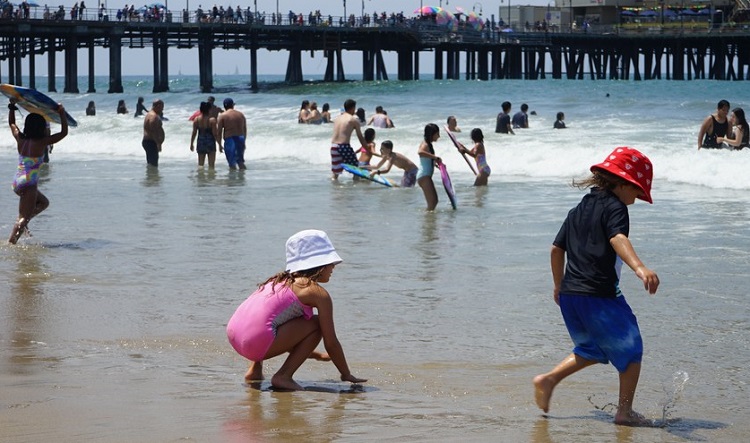Heat wave bakes Southern California, intensifying wildfire risks
Published : 12 Jul 2023, 22:57
A brutal heat wave is sweeping over Southern California this week, intensifying fire danger to the region and increasing risks for heat-related illness, reported Xinhua.
The heat wave has come to the region as a heat dome builds over the U.S. Southwest and West.
High temperatures throughout Southern California are expected to reach as high as 112 degrees Fahrenheit between Tuesday and Saturday, according to weather forecast.
An excessive heat watch has been issued for the western and eastern Antelope Valley foothills starting Wednesday morning through Saturday evening, when temperatures could reach 110 degrees.
The peak of the excessive heat will strike Friday through Sunday, according to the U.S. National Weather Service (NWS). Widespread high temperatures around 100 to 108 degrees are expected across the warmest valleys, including Woodland Hills, the Santa Clarita Valley and parts of the San Gabriel Valley.
The NWS has issued excessive heat warnings for Southern and Central California, with temperatures expected to reach as high as 113 degrees in parts of Los Angeles County after Tuesday.
Los Angeles County has opened 167 cooling centers for residents, providing access to free, indoor air-conditioned facilities.
This heat wave is critical as many Southern Californians have not been acclimated to hot weather yet, outside of the brief warm up earlier this month, according to NWS meteorologist Eric Boldt.
The entire U.S. Southwest region, including Arizona and New Mexico, is also bracing for a "dangerous" heat wave, which could bring high temperatures to the lower deserts between 106 to 112 degrees this week through Thursday and temperatures between 111 to 117 degrees from Wednesday through this weekend.
Health officials advised people to take precautions against extreme heat, stay indoors from 10 a.m. to 3 p.m. during the hottest parts of the day, reduce physical activity, stay hydrated throughout the day, and check on the elderly, young children, and those who may not have access to cooling.
The heat wave has also intensified risks for wildfires.
During the heat wave, there is potential for wildfire activity at lower elevations, especially because of the wet weather during the winter and spring and cooler temperatures in May and June, which allowed for a fruitful growing season for plants, according to Daniel Swain, a climate scientist at the Institute of the Environment and Sustainability, University of California, Los Angeles.


